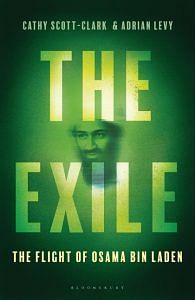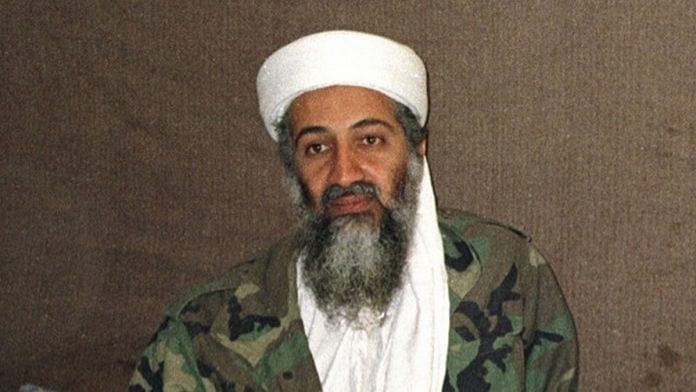The reprisals of the mujahideen shall come like lightning bolts.”
—Elegy for Zarqawi, written by Abu Yahya al-Libi, Al Qaeda cleric, Summer 2006, Damadola, Bajaur Agency, Federally Administered Tribal Areas, Pakistan
Along the Afghan border, a death-strip of fortifications neared completion, and fighters bedded down in trenches in Razmak, Mir Ali, Miram Shah, and Dande-Darpa Khel as well as Damadola. Villages and towns were sown with preachers who beat a drum for the Taliban and Al Qaeda. While Abu Musab al-Zarqawi kept the black flags aloft in Iraq, and Osama (whose anonymous existence was being safeguarded by mujahid outfits cloaked by the intelligence service) did the same from Abbottabad, his life force drawing in funds and recruits from around the world, Dr. al-Zawahiri reshaped Al Qaeda’s ideology and set a course for war against American troops in Afghanistan. Money was flowing in once more.
After the recent years of fame, Al Qaeda was attracting cash, recruits, and prestige like no other jihad group in history. Hundreds of thousands of U.S. dollars were pledged by supporters in the Gulf states who were inspired by American atrocities in Iraq and drone strikes that killed innocent civilians in Pakistan, and who wanted to see more action from an organization that had inspired the London public transport bombings of July 2005. Its network reached around the globe and through the heart of Iran. As Al Qaeda’s chief strategist, Dr. al-Zawahiri briefed a new generation of two hundred operational commanders, men entrusted with driving events out in the field without recourse to the center. Beneath grew a standing army of impoverished peasants, madrassa graduates, unemployed farmhands, orphans and the children of broken families, local ruffians, and Taliban fighters who crossed the border every month to attend training workshops run by visiting Al Qaeda commanders from the front lines of Iraq.
Also read: Abu Bakr al-Baghdadi, the IS leader known for barbaric executions & love for football
Huge swathes of the impoverished Tribal Areas had been sucked into a Taliban–Al Qaeda vortex that transformed the lands-beyond-reach into a vision drawn by Hieronymus Bosch. The most courageous tribal journalists photographed the beheading of spies and the crucifixions of heretics, nailed to telegraph poles in Miram Shah, while in Mir Ali the guilty were flayed, chained alive to pickups, and dragged through the streets until they disintegrated. From the center of the maelstrom, Dr. al-Zawahiri issued a new edict.
Believing the intelligence that had led the CIA to bomb the Damadola compound had come from the eavesdropping of loose-lipped couriers, he fired them, ordering media-savvy Azzam the American to upgrade Al Qaeda’s delivery methods. Instead of sending out traceable men with cumbersome tapes and letters in plastic shopping bags to be dumped at discoverable dead-drops under bushes in Islamabad, announcements and speeches would in the future be uploaded invisibly onto password-protected websites, accessed by a new distribution network called Al-Fajr Media Center.
It comprised hundreds of anonymous webmasters scattered around the globe whose job was to decrypt the material, repost it on popular Islamist forums, and encourage like-minded armchair mujahideen to enlist. Content was streamlined, too, with Azzam producing broadcast-quality quasi-documentaries on his Sony Vaio, editing together high-definition footage and cell-phone videos, underscored by easy-to-understand Islamic dogma. In his makeshift studio, he had mastered a version of “green screen” that enabled him to transport Dr. al-Zawahiri to a backdrop of his choosing.
Osama kept a close eye on their prolific output. He was pleased at the progress the doctor made in representing Al Qaeda, but he disliked his deputy’s hectoring and pedantic tone. He preferred the poetic and ambiguous Arabic phonemes of the old days. Looking forward to a time when he could seize back control of the message, he had expanded his own media center in Abbottabad into two bedrooms, ordering the children whose space he took to squash up.
Osama’s silence was a cause for worry, especially among shura members trapped in Iran who wondered if he was ill or even dead, as the ISI maintained in its dealings with the CIA. “I want to criticize you the same way a younger brother would criticize his older brother for not letting us know how you are doing,” wrote one of the Mauritanian’s comrades in a letter that was smuggled over the border and reached courier Ibrahim, who took it to Abbottabad. “I hope you know how much you mean to us.”
Also read: Baghdadi is dead but Islamic State is not
Supporters in the Arabian Peninsula also wrote: “How true is it that Shaykh Ayman [al-Zawahiri] is the most influential man in the organization and that Abu Abdullah [bin Laden] is like a puppet on his hand?” Had Osama ceded all authority to Dr. al-Zawahiri? The writer worried Al Qaeda was now “tinged” with the ideology of Egyptian Islamic Jihad “to the detriment of the whole movement.” Osama dispatched polite replies stating that he was well and remained the captain of the ship, but privately he had become fixated on his inability to rein in Abu Musab al-Zarqawi, whose theater of death continued unabated.
One particular act got Osama riled: the fallout from Zarqawi’s November 2005 hotel bombings in Amman, as video and eyewitness accounts emerged from the Radisson SAS Hotel, where husband and wife suicide bombers, Ali and Sajida al-Rishawi, had invaded a wedding in the Philadelphia Ballroom. Sajida, the sister of one of Zarqawi’s closest aides, was unable to make her belt work. Ali screamed at her to run, while he leaped onto a table and flicked his switch, bringing down the ceiling and a wall of plate-glass windows, killing thirty-eight Jordanian partygoers, including the fathers of the bride and groom. Failed bomber Sajida was made to confess her crimes on TV. The attack triggered immediate and ferocious condemnation from mujahideen, clerics, and influential Saudi sheikhs.
It also spurred President Bush to deploy a secret military unit, Task Force 145, to run Zarqawi to ground any way it could. Emboldened by his cheerleaders, Zarqawi released a provocative video in which he strutted about dressed in black fatigues with ammunition pouches strapped to his chest, while swearing allegiance to Osama and surrounded by heavily armed companions who obscured their faces. He made a surprise announcement. He intended to declare an Islamic state or caliphate in Iraq within three months. Whoever remained would have to submit to living under the ancient hudud punishments of execution, beheading, stoning, and amputation. Those who rejected him would be hunted down and killed.
 This excerpt from Cathy Scott-Clark and Adrian Levy’s The Exile has been published with permission from Bloomsbury India.
This excerpt from Cathy Scott-Clark and Adrian Levy’s The Exile has been published with permission from Bloomsbury India.



